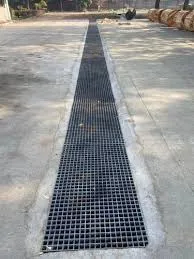
-
 Afrikaans
Afrikaans -
 Albanian
Albanian -
 Amharic
Amharic -
 Arabic
Arabic -
 Armenian
Armenian -
 Azerbaijani
Azerbaijani -
 Basque
Basque -
 Belarusian
Belarusian -
 Bengali
Bengali -
 Bosnian
Bosnian -
 Bulgarian
Bulgarian -
 Catalan
Catalan -
 Cebuano
Cebuano -
 China
China -
 China (Taiwan)
China (Taiwan) -
 Corsican
Corsican -
 Croatian
Croatian -
 Czech
Czech -
 Danish
Danish -
 Dutch
Dutch -
 English
English -
 Esperanto
Esperanto -
 Estonian
Estonian -
 Finnish
Finnish -
 French
French -
 Frisian
Frisian -
 Galician
Galician -
 Georgian
Georgian -
 German
German -
 Greek
Greek -
 Gujarati
Gujarati -
 Haitian Creole
Haitian Creole -
 hausa
hausa -
 hawaiian
hawaiian -
 Hebrew
Hebrew -
 Hindi
Hindi -
 Miao
Miao -
 Hungarian
Hungarian -
 Icelandic
Icelandic -
 igbo
igbo -
 Indonesian
Indonesian -
 irish
irish -
 Italian
Italian -
 Japanese
Japanese -
 Javanese
Javanese -
 Kannada
Kannada -
 kazakh
kazakh -
 Khmer
Khmer -
 Rwandese
Rwandese -
 Korean
Korean -
 Kurdish
Kurdish -
 Kyrgyz
Kyrgyz -
 Lao
Lao -
 Latin
Latin -
 Latvian
Latvian -
 Lithuanian
Lithuanian -
 Luxembourgish
Luxembourgish -
 Macedonian
Macedonian -
 Malgashi
Malgashi -
 Malay
Malay -
 Malayalam
Malayalam -
 Maltese
Maltese -
 Maori
Maori -
 Marathi
Marathi -
 Mongolian
Mongolian -
 Myanmar
Myanmar -
 Nepali
Nepali -
 Norwegian
Norwegian -
 Norwegian
Norwegian -
 Occitan
Occitan -
 Pashto
Pashto -
 Persian
Persian -
 Polish
Polish -
 Portuguese
Portuguese -
 Punjabi
Punjabi -
 Romanian
Romanian -
 Russian
Russian -
 Samoan
Samoan -
 Scottish Gaelic
Scottish Gaelic -
 Serbian
Serbian -
 Sesotho
Sesotho -
 Shona
Shona -
 Sindhi
Sindhi -
 Sinhala
Sinhala -
 Slovak
Slovak -
 Slovenian
Slovenian -
 Somali
Somali -
 Spanish
Spanish -
 Sundanese
Sundanese -
 Swahili
Swahili -
 Swedish
Swedish -
 Tagalog
Tagalog -
 Tajik
Tajik -
 Tamil
Tamil -
 Tatar
Tatar -
 Telugu
Telugu -
 Thai
Thai -
 Turkish
Turkish -
 Turkmen
Turkmen -
 Ukrainian
Ukrainian -
 Urdu
Urdu -
 Uighur
Uighur -
 Uzbek
Uzbek -
 Vietnamese
Vietnamese -
 Welsh
Welsh -
 Bantu
Bantu -
 Yiddish
Yiddish -
 Yoruba
Yoruba -
 Zulu
Zulu
the importance of frp launder in modern water treatment
The Importance of FRP Launder in Modern Water Treatment
In recent years, the growing demand for efficient and sustainable water treatment solutions has led to significant advancements in the materials and technologies used in various water treatment processes. Among these innovations, Fiber Reinforced Polymer (FRP) launder systems have emerged as a vital component in modern water treatment facilities. This article explores the importance of FRP launders, highlighting their benefits, applications, and the role they play in enhancing water treatment efficiency.
The Role of Launders in Water Treatment
Launders are essential structures in water treatment plants, primarily used for the collection and distribution of water during various stages of treatment. They play a crucial role in processes such as sedimentation, filtration, and disinfection. By facilitating the controlled flow of water, launders help optimize the treatment process and minimize the risks of contamination and inefficiencies. However, the materials used to construct these launders are critical to their effectiveness and durability.
Advantages of FRP Launders
1. Corrosion Resistance One of the most significant advantages of FRP launders is their resistance to corrosion. Traditional materials like steel and concrete are often susceptible to corrosive environments, especially in water treatment settings where chemicals are routinely used. FRP, on the other hand, exhibits exceptional corrosion resistance, which extends the lifespan of the launder systems and reduces maintenance costs.
2. Lightweight and Durable FRP materials are considerably lighter than traditional construction materials. This lightweight nature simplifies installation processes and can reduce overall construction and labor costs. Despite their lightness, FRP launders are remarkably durable and can withstand harsh environmental conditions, including extreme temperatures and chemical exposure.
3. Customization and Design Flexibility The versatility of FRP materials allows for a variety of design options to meet specific application needs. Custom-shaped FRP launders can be engineered to fit the unique layout of treatment facilities, optimizing space and improving flow dynamics. This adaptability can lead to enhanced operational efficiency.
the importance of frp launder in modern water treatment

4. Lower Life-Cycle Costs While the initial capital cost of FRP launders may be higher than that of traditional materials, their long-term benefits contribute to lower life-cycle costs. The reduced need for maintenance, combined with their durability and resistance to chemical degradation, makes FRP an economically viable choice for water treatment plants.
5. Sustainability FRP materials can be manufactured with a focus on sustainability. Many FRP products are made from recycled materials, and their longevity reduces the need for frequent replacements. Furthermore, the energy-efficient manufacturing processes contribute to a lower carbon footprint, aligning with the increasing demand for eco-friendly solutions in water treatment.
Applications in Water Treatment
FRP launders are commonly utilized in various stages of water treatment processes. In sedimentation tanks, they help collect clarified water, preventing the resuspension of settled solids. In filtration systems, FRP launders facilitate the distribution of water evenly across filter beds, enhancing filtration efficiency. Additionally, in effluent treatment processes, they play a critical role in the final polishing stages, ensuring that treated water meets quality standards before being released into the environment.
Conclusion
As the water treatment industry continues to evolve, the importance of innovative materials such as FRP cannot be overstated. The incorporation of FRP launders into modern water treatment systems offers numerous benefits, including corrosion resistance, design flexibility, and lower life-cycle costs. By enhancing the efficiency and sustainability of water treatment processes, FRP launders contribute significantly to addressing the global challenges of water scarcity and pollution.
In summary, the adoption of FRP launders represents a forward-thinking approach to modern water treatment, ensuring that facilities can effectively meet the demands of today while laying the groundwork for a more sustainable future. As water treatment facilities seek to improve their operations, the integration of advanced materials like FRP will undoubtedly play a crucial role in achieving these goals.









